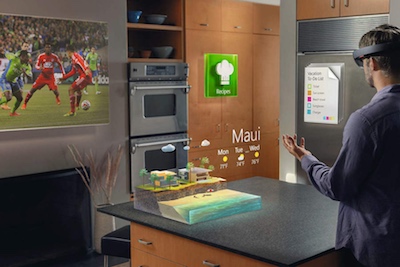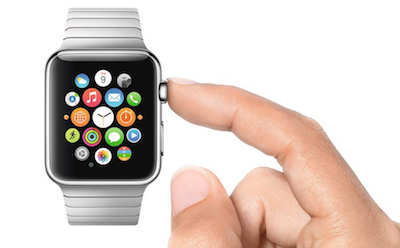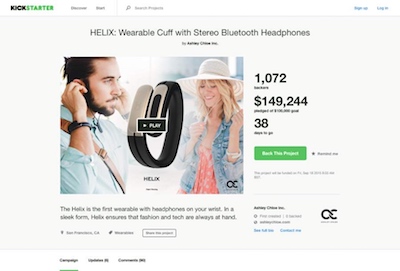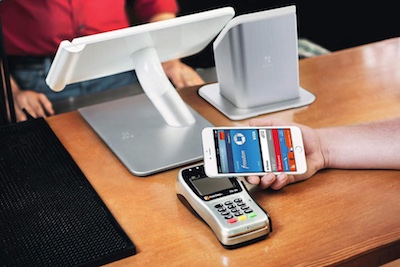
There's more jargon in the wearable world than would fit on a stack of post-its. So T3 is here to break down the acronyms and clear out the marketing guff. Read on to make wearables make more sense…
Accelerometer
This sensor enables a wearable to tell which direction it's facing and how fast it's accelerating, through the force effect of gravity. It features MEMS technology that crams a mechanical element into a wearable's silicon. This is one of the most important wearable sensors.
Altimeter
An altimeter measures how high above sea level you are by analysing barometric pressure. This is handy for activity tracking, as it can let a wearable know that you're working particularly hard by, say, walking 500 metres up a mountain, and not just making your way along your local high street to the sweet shop.
Android Wear
The wearable side of Android, Wear is a stripped-back version of the mobile OS, designed for low-power, small-screen devices such as smartwatches. It offers some of the same features, though, such as Google Now.
AR (Augmented reality)
AR is likely to become a leading influence in the development of smartglasses. It involves superimposing digital goodies onto our view of the real world. That could be anything from reviews of the restaurant down the road, to an army of mutants to spur on a 5k run.

Bluetooth LE
Most wearables hook up to your phone, and use Bluetooth to do so. The LE (low energy) part of the Bluetooth 4.0 and 4.1 standards makes this practical, by leeching almost no energy from the phone's battery, even while communicating with the thing almost constantly.
Chest strap
Want a serious fitness wearable? There's a good chance it'll use a chest-strap heart-rate monitor rather than one attached to your wrist, as they're more accurate and reliable. This is no surprise when their sensing area is that much closer to your heart.
Get all the latest news, reviews, deals and buying guides on gorgeous tech, home and active products from the T3 experts
Circadian rhythm
Some wearables try to influence or realign your circadian rhythm, which is what tells your body when you're meant to be awake or asleep. A lot of it comes down to the kind of light we see as the day is starting or ending.
Digital crown
You see that little winder on the side of your Apple Watch? That's called the Digital Crown, and it acts as both a button and a control dial for much of the nuanced input.

EEG sensor
Some of the more out-there wearables use electroencephalogram or 'brainwave' sensors to enable you to control things with your mind. There are even game controllers using this tech, such as the Emotive EPOC+.
E-Paper
Lots of wrist-worn wearables use an LCD screen in the same way that smartphones do, but some use e-paper, which is tech designed to improve daylight visibility. Most of these use 'memory tech', meaning they hardly use any battery.
Fitness tracker
One of the most common kinds of wearable is the fitness tracker. These generally affordable wrist gadgets use accelerometer and gyroscope sensors to count your steps. Some also have altimeters to count how many step you climb up. Most don't have GPS, though.

FOV (Field of view)
A virtual-reality headset's FOV rating tells you how much of your field of view it'll take up. The Oculus Rift offers a 110-degree horizontal field of view, which equates to a display that seems all-encompassing.
Gestures
Every touch-based wearable OS relies heavily on gestures. These wrist movements, and swipe, pinch and press finger manoeuvres, really cut down on the number of virtual buttons that need to be crammed onto a display.
Glonass
You'll generally only see the term GLONASS used in relation to GPS. It's a Russian-owned satellite system that, when used alongside GPS, gains you greater accuracy.
Google Now
The system that provides Android Wear devices with much of their day-to-day info. Google Now hooks into your location and behaviour to give you relevant snippets of info, from the weather to sports results.
Gyroscope
Usually partnered with an accelerometer, a gyroscope enables a wearable to work out, relatively, the exact angle it's facing. The two sensors working in tandem can turn a wearable into a remarkably accurate motion controller.
GPS (Global positioning system)
The best way to track your exact position is with a GPS chip. This talks to satellites in Earth's orbit to triangulate your exact position, all from a humble wearable device.
IOT (Internet of Things)
The Internet of Things sounds like a pretty vague term, but refers to all the little things that are fast becoming smart, from door locks to thermostats and lightbulbs. You can control an awful lot of these from wearable devices already.
IP67
The IP system is the simplest way to ascertain your wearable's water resistance. IP67 is the most common ranking, telling you it's dustproof and can be submerged in one metre of water for at least 30 minutes.
HR (heart-rate) sensor
Many of today's smartwatches feature a heart-rate sensor. These generally use green LEDs and a photosensor to determine when there's more blood flowing through your veins. Red pigment absorbs green light, thereby decreasing how much light the sensor will 'see'.
Kickstarter
Many indie wearable devices get off the ground thanks to crowd-funding platforms like Kickstarter and Indiegogo. They're worth checking out if you want to get on board with a project early.

mAh
A wearable's battery life will generally be measured in mAh (milliampere hours). It's an indication of how much charge a battery holds, although actual real-world stamina depends on what it needs to power.
NFC (Near-field communication)
The tech that powers Apple Pay and Android Pay. This is a short-distance, wireless communication method that enables you to make contactless payments using a wearable device.

Nixie
Like something from Transformers, Nixie is a camera-equipped drone that folds into a wrist wearable. It sounds like a pipe dream, but it's real – and it even won a $500,000 (£320,000) Intel development prize.
OLED (Organic light-emitting diode)
One of the top wearable screen technologies. As well as offering excellent contrast, these screens only light up the pixels needed, which means a simple watch face needn't suck up much battery life.
QI Charging
Charging without wires? Inductive charging is an important wearable tech, and one of the leading standards is Qi. This enables a battery to charge safely without any physical connection between a device and a charger. And it's pronounced “chee”, by the way.
Runner's watch
If you see a watch that's specifically marketed at runners, it's likely to feature GPS. This enables the wearable to accurately track your runs, hikes and cycles on a map, using satellite geolocation to keep an eye on where you are.
Sleep tracking
Watching you while you sleep is a leading feature of wrist-based wearables. This technology usually involves a combination of accelerometer and gyroscope sensors to measure how long you sleep each night, as well as the quality of your slumber.
Smartglasses
What's the difference between smartglasses and a virtual-reality headset? Smartglasses don't block out your vision – instead, they superimpose images and/or text onto what you normally see. This is the future of augmented reality. With any luck.
Smartwatch
What exactly is a smartwatch? It's a pretty amorphous term, but all of them hook up to your smartphone to offer notifications, and most enable you to download additional apps.
SOC (System on chip)
In order to stay compact, wearable devices use system-on-chip processor architectures, where all of the brains are crammed into a single, compact unit. Some smartwatches even use the same chips as phones.
UV (Ultraviolet) sensor
Some sensor-rich wearables have UV sensors, which measure the ultraviolet radiation bombarding your skin. This is a good way to tell which factor sunscreen you should be using on any given day.
VR (Virtual reality)
After years in the wilderness, VR is making a comeback. There's an array of VR headsets and smartglasses incoming, including entertainment ones for your PC and PS4, as well as more business-y sets like Microsoft's HoloLens.

Watch OS
The operating system used on the Apple Watch. It hooks into an iPhone's iOS software, which is where you install apps to your Watch. It also enables an Apple Watch to borrow an iPhone's sensors, such as GPS.

- Why not read: World's smartest helmet set for Christmas release

For 25 years T3 has been the place to go when you need a gadget. From the incredibly useful, to the flat out beautiful T3 has covered it all. We're here to make your life better by bringing you the latest news, reviewing the products you want to buy and hunting for the best deals. You can follow us on Twitter, Facebook and Instagram. We also have a monthly magazine which you can buy in newsagents or subscribe to online – print and digital versions available.
